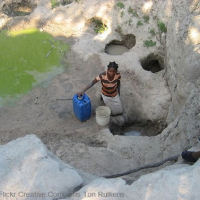
Researchers from Emory University, the London School of Hygiene and Tropical Medicine, and the World Health Organization have carried out an updated Cochrane review to assess the effectiveness of interventions to improve water quality for preventing diarrhoea.
Contaminated water is a major cause of diarrhoea worldwide, especially among young children in low- and middle-income countries. In these settings, water often has to be collected from open rivers or streams, sometimes carried long distances, and frequently stored in open containers.
While reliable, piped-in supplies of clean water are undoubtedly the preferred option, the review authors found no trials assessing this, and only very few trials assessing improvements in the water source such as wells, bore holes, or harvested rain water.
However, the review authors included 47 trials, enrolling more than 72,000 participants, assessing interventions to improve the quality of drinking water in peoples’ homes.
“These interventions that address the microbial contamination of water at the point-of-use can be important interim measures to improve drinking water quality,” said Professor Thomas Clasen from Emory University, the lead author of the review, “especially as re-contamination often occurs during use in the home, even where the source water is relatively safe”.
The review authors found that interventions of distributing chlorine products or sachets of disinfectant to people’s homes, to be added to stored water, may reduce diarrhoea episodes by about a quarter, and water filtration at home using various types of filtration systems probably reduces diarrhoea by around a half. They also found some evidence that even very low-tech solutions, such as leaving bottled water in direct sunlight for six hours, may have important protective effects.
“The evidence suggests that the more people use these interventions, the greater the benefits,” added Professor Clasen, “so we also need research into practical approaches to increase the coverage and long-term use of these interventions, particularly among the most vulnerable populations”.
Read the updated review here
